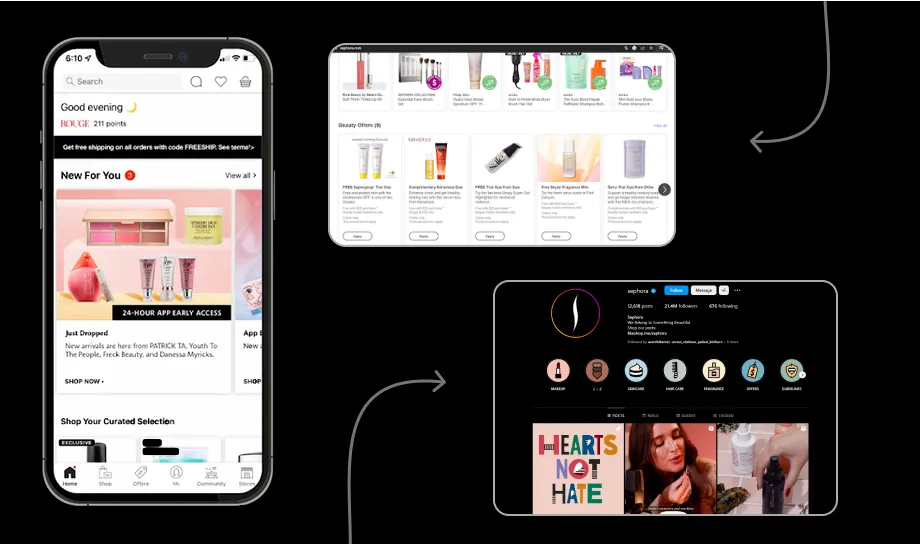More About Omnichannel
Did you know the concept of omnichannel was introduced in 2010 by marketers? The word was coined to describe a purchasing experience beyond multichannel selling. The goal of omnichannel marketing was to provide customers with a seamless purchasing experience across channels.
What is omnichannel marketing’s primary objective?
Omnichannel marketing aims to chart and connect a customer’s shopping journey across several channels based on data and analytics.
Although omnichannel programs may contain many moving pieces, it works as a single, synchronized system. Every point of interaction should present a unique yet interconnected experience that builds upon prior interactions and advances the customer toward the desired outcome.
By focusing on the customer and their individual preferences, omnichannel marketing sets up businesses to deliver personalized experiences throughout the buying journey. Customers should also be able to move between channels effortlessly without disruptions.
The three main elements of omnichannel marketing are as follows:
- Commerce: This emphasizes the customer’s ability to purchase products across channels, both offline and online.
- Personalization: This strategy emphasizes personalized, targeted, and pertinent cross-channel engagement with the target audience at volume.
- Ecosystem: The approach attempts to establish and maintain effective cross-channel platforms aligned with customer wants, needs, and behaviors.
An omnichannel strategy with social media drives increasing customer engagement, as social media platforms drive marketing results and are integral to customers’ daily lives. All channels will work holistically to create a unified and seamless user experience.
For instance, consider a clothing boutique that sells its products online on its website, Instagram, and in-store. Customers may engage with the brand through SMS, Instagram posts, and other forms of inbound marketing apart from the physical storefront. The brand must deliver consistent messaging and services across all these touchpoints.
Businesses across high-value segments typically follow an omnichannel strategy by taking a customer-centric approach. Amazon, Starbucks, Walt Disney, and Sephora are some brands that follow an omnichannel approach.Here is an example of the omnichannel marketing strategy followed by Sephora, the famous cosmetic brand. The image below shows the Sephora mobile application, Instagram Shop, and online shopping website. It also has physical stores in several countries.



